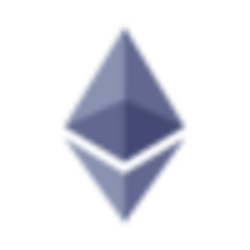-
Interoperability is revolutionizing the gaming industry, allowing assets, achievements, and identities to traverse platforms seamlessly.
-
The integration of blockchain technology enhances metaverse interoperability, converting in-game items into NFTs and ensuring real-world ownership and portability.
-
Challenges like scalability and user skepticism highlight the need for innovative solutions to maximize the potential of a connected metaverse.
Discover how blockchain interoperability is shaping the future of gaming, bridging platforms, and creating new opportunities for player engagement.
Breaking Siloed Gaming Ecosystems
The gaming industry has long grappled with a significant drawback: the lack of true ownership of digital assets. Traditionally, players invest time and money to develop characters and collect items, only to find these assets confined to a single gaming environment. This confinement has persisted into the metaverse, limiting player experience and engagement.
Interoperability stands as a solution to this dilemma by enabling the transfer of digital assets, achievements, and identities across various platforms and blockchain networks. This connectivity enriches the player experience, facilitating a metaverse where digital assets possess genuine value beyond the confines of individual games.
“Blockchain gives players control over their virtual items across various environments, unlike traditional gaming where purchases are locked to a single account or platform,” Ilman Shazhaev, Founder and CEO of Farcana, explained in a recent interview.
Breaking Barriers with Blockchain
The essence of interoperability hinges on tokenization. By representing in-game items—such as avatars and weapons—as NFTs, players gain mobility and utility across different platforms. This transformation makes these assets not only unique but also tradable and usable beyond their original confines.
“This eliminates the trend of valueless microtransactions seen in many AAA games. When you unlock new content, it now holds actual real-world value,” said Shazhaev.
Innovative platforms like Farcana exemplify the effective application of blockchain in gaming interoperability. Players can tokenize their in-game assets, allowing them to trade or utilize these items in other compatible environments. Similarly, Decentraland showcases its commitment to interoperability by enabling users to transfer avatars, virtual real estate, and other valuable items across its ecosystem.

Retail Digital Assets Investor Survey March 2024. Source: EY-Parthenon.
Through these innovations, platforms cultivate an inclusive user experience, allowing players to carry their investments across varying landscapes. However, a recent survey from EY-Parthenon indicates that gaming assets are not yet ranked among the top digital asset classes, falling short in desirability despite the burgeoning interoperability.

Unique Number of Wallets (UAW) Decentraland, August to November 2024. Source: DappRadar.
Challenges in Achieving Interoperability
Despite its potential, achieving true interoperability comes with challenges that must be addressed. Scalability is critical; Ethereum, the forerunner in blockchain gaming, struggles to process merely 15-30 transactions per second (TPS), in stark contrast to other payment platforms like PayPal, which can handle up to 193 TPS. This limitation presents issues like elevated transaction costs and delayed processing times, potentially disrupting user engagement.
Additionally, the complexity inherent in blockchain games often deters players; a 2024 survey found that 10% of traditional gamers indicated that the process of managing wallets and digital tokens hindered their willingness to participate in blockchain gaming.
Developers must thus focus on simplifying user onboarding while maintaining the core advantages of blockchain—transparency, security, and ownership.
Furthermore, the perception of blockchain games as overly focused on financial speculation can impact their broader acceptance. “Developers are now optimizing play-to-earn frameworks,” said Shazhaev, emphasizing a shift towards enhancing gameplay quality rather than immediate financial returns.
The Future of Interoperability in the Metaverse
Looking ahead, the future of interoperability appears promising. The emergence of unified marketplaces may soon enable asset trading across diverse platforms, enhancing liquidity and extending the lifecycle of digital investments.
Innovative concepts like dynamic assets—items that can adjust their functions depending on the platform—are on the horizon. Imagine a weapon obtained in one game that serves different purposes across various gaming environments. This adaptive functionality represents the pinnacle of immersive gaming experiences.
The blockchain gaming sector is witnessing a surge in investment, with figures soaring to $1.1 billion in Q2 2024—a staggering 314% increase from the previous quarter, reflecting the industry’s growing confidence in blockchain-based interoperability.
As projected by Statista, the metaverse gaming market is anticipated to expand rapidly, potentially reaching a staggering $168 billion by 2030.

Metaverse Gaming Market Size Projection, March 2024. Source: Statista.
Shazhaev articulates a vision for a connected metaverse, where players and developers collectively benefit from these advances:
“Blockchain allows us to build ecosystems where players and developers both benefit, unlocking new opportunities for engagement and innovation,” he concluded.
In summary, interoperability marks a transformative phase in the gaming landscape, dismantling the silos that once confined digital experiences. By leveraging blockchain technology, the vision of a unified metaverse begins to materialize, enhancing player experiences and developer opportunities alike. However, overcoming challenges around scalability, complexity, and public perception will be crucial for this vision to reach its full potential.
